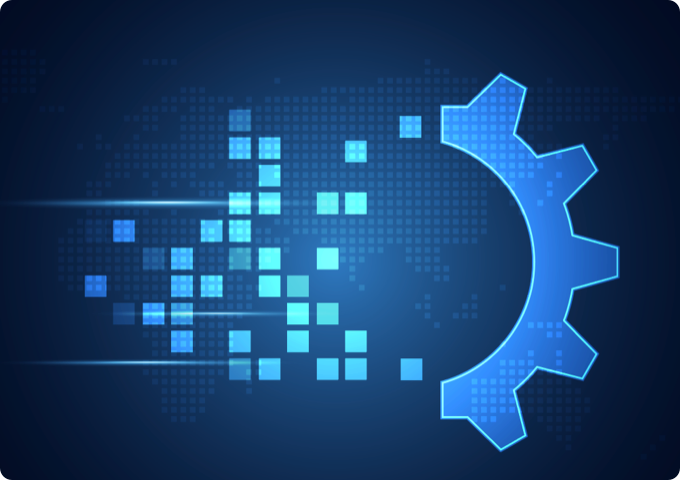

Summary
There is a lot more to digital transformation than implementing the relevant technology solutions. More than implementation, it’s about adoption. To be a truly intelligent enterprise, a company needs its people to think digital first. Embrace the technology solutions available and harness them to improve the efficiency of their work. This is an exercise in culture change, and HR, as a custodian of organization culture, is in the driver’s seat to bring in 2x impact.
Kate’s company was undergoing a digital transformation and had adopted several intelligent systems to aid business processes and decision making. However, all was not going as planned. The systems were great, and they had the potential to make work much smarter for employees. The frustrating thing was that people were just not using them as much as they should. This was proving to be a massive challenge across the organization in their quest to move towards becoming an Intelligent Enterprise.
Well, Kate’s company is not the only one facing this challenge. While the aspiration and the technology vision are in the right place when it comes to moving towards an Intelligent Enterprise, most companies get blindsided by the on-ground reality – i.e., the need for buy-in from the people. I see three roadblocks on this road – the pace of cultural transformation, the chasm between strategy and execution, and the data disconnect. The Human Resource function can help companies overcome these challenges creating twice the impact on their transformation journey towards an Intelligent Enterprise – making it 2x seamless, 2x faster, and 2x smarter.
Let’s look at these challenges and what the Human Resource function can do to help overcome them.

Cultural transformation lags the technological pace
I know of this organization that invested in a great Human resources information systems (HRIS), and changed the HR structure with an intent to deliver value based on the Dave Ulrich model. However, shared services continued managing operations through manual processes.
It’s relatively easy to invest in new technology but challenging to get people to adopt it. To move 2x faster towards an Intelligent Enterprise also means a whole new way of working. Where data and facts need to merge with gut feel and intuition. And focus shifts from routine tasks – that are taken care of by intelligent, interconnected systems – to higher-value work. This is a difficult shift for people in the workplace, especially those who aren’t that comfortable with new technologies. Culture is often the most significant battle companies must fight when it comes to change. It’s tough to break old habits. Yet, it’s the most important piece for the success of the transformation. According to Mckinsey, “70 percent of transformations fail, and 70 percent of those failures are due to culture-related issues.”ⅰ
The HR function can help drive this cultural transformation. HR will need to plan and pace for 2x impact on the Intelligent Enterprise. One way to do this is by ensuring relevant training, reskilling, and communication happens consistently and well in advance of the coming change. There must be a mechanism in place to understand and address employee concerns and perhaps even incentives for being early adopters.
The broken bridge between strategic goals and everyday routine
One of the key reasons for the cultural lag is that strategic initiatives take time to percolate down to the grassroots level. While the company’s vision to become an Intelligent Enterprise may be set by the leadership team, achieving it is everyone’s KPI. But are its resources in sync? Does the day-to-day functioning happen intelligently? Do the people feel like they are working in a 2x enterprise?
To bridge this gap, and make it 2x more seamless, the cultural transformation effort must be broken down into smaller initiatives at the team level. In fact, according to HBR, over 50% of the variability in a unit’s performance can be attributed to the individual leader.ⅱ And this is where HR can enable managers and team leaders to drive the desired change. Currently, most team managers are not equipped to lead their teams into the next normal. I have seen entry and mid-level managers enabled and empowered significantly in an organization that had a recurring enablement program every 2 to 3 years, designed around the organizational initiatives relevant at the time.
There is a need to train and support managers and provide them with real-time people data to ensure that their teams work intelligently. That people are using the tools and technologies and moving away from manual, repetitive tasks. For instance, one of our clients – a transnational consumer goods company – was facing a Human Resource efficiency issue in their Brazil operations. Complex legal and compliance requirements made it tedious to hire employees and manage exits and required a high HR headcount. Every document had to be manually checked and processed, wasting precious resource time. In this case, using automation and AI, we were able to help them cut down processing time from hours to just minutes.

The great data disconnect
The promise of an Intelligent Enterprise – doing things 2x more effectively using data in a smarter, faster, agile way sounds fantastic. But it’s easier said than done. One of the biggest challenges companies face today is the data siloes that still exist. Existing systems are so fragmented that finding the relevant data is like looking for a needle in a haystack. Often things are so bad that people create manual reports from a system-generated report to give them information that makes sense!
And lack of these insights handicaps them, to begin with. To drive change, one must be able to identify gaps and measure progress. If HR is to drive the cultural transformation towards intelligent ways of working, they need to be able to demolish data siloes to get a complete picture of organizational needs. For instance, what are the skills necessary to become an Intelligent Enterprise? How many of these skills do we have? What do we have to reskill for? What is the talent that we need to hire? What are the employee engagement and wellbeing needs during change? How well are people learning and adapting? What are the reasons behind attrition and how can they be addressed? How far along are we on the road to transformation?
By connecting the dots with organizational data – the HR function can identify where one can make a strategic impact in this journey, develop appropriate metrics around these areas, obtain data relevant to these metrics, draw out insights, and act for 2x strategic change. For instance, data on skills, experience, and performance can help identify which training programs have the most impact. Or data around engagement and productivity can help identify the impact of change on performance.
Loved what you read?
Get practical thought leadership articles on AI and Automation delivered to your inbox


Loved what you read?
Get practical thought leadership articles on AI and Automation delivered to your inbox
HR as a 2x impact partner in the Intelligent Enterprise
Data is the lifeblood of an Intelligent Enterprise that runs on AI and automation. However, data alone is not enough. The intelligence needs to be embedded in the company culture, and that’s where the role of HR becomes critical. There is a long road ahead, and now is the time for the HR function to steer the organizational culture and capabilities towards its strategic vision.






